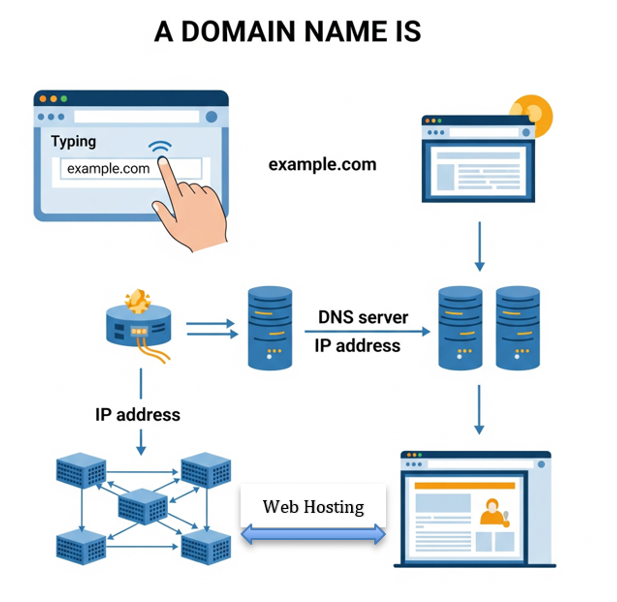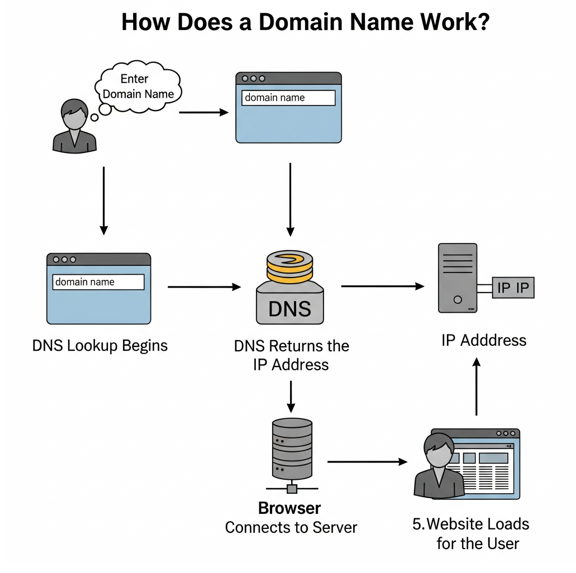In today's digital age, almost everything starts with a website. Whether you're building an online store, creating a personal portfolio, or launching a business, your journey begins with a domain name. But what exactly is a domain name, and how does it work behind the scenes? This blog will break it down for you.
What is a Domain Name?
The domain name is the unique address you type into a browser to visit a website like google.com or stc.com.sa. It's a human-friendly version of a website's actual location on the internet, which is defined by an IP address—a string of numbers like 192.168.1.1.

Figure 1. Domain Name Representation
Why Are Domain Names Important?
- Memorability: Unlike IP addresses, domain names are easy to remember and share.
- Brand Identity: A good domain name strengthens your brand's credibility and visibility online.
- SEO: Having a relevant and keyword-rich domain name can improve your website's search rankings.
- Trust: Professional domain names (like yourbrand.com.sa) make users more likely to trust your website.
Structure of a Domain Name
A domain name typically has three parts, separated by dots:
- Subdomain (optional): For example, www in www.example.com or blog in blog.example.com. The www. is a whole other domain that you can buy that will increase the likelihood of your search engine optimization for the company.
- Second-Level Domain (SLD): This is the name you register with, like example in example.com.
- Top-Level Domain (TLD): This comes after the dot — like .com, .org, or country-specific options like .sa.
How Does a Domain Name Work?
The process of accessing a website using a domain name involves a few key steps:
- User enters the domain name into a browser.
- DNS Lookup begins to find the IP address linked to that domain name.
- DNS returns the correct IP address.
- Browser connects to the web server using the IP address.
- Website loads and are displayed to the user.

Figure 2. Process for Domain Name Search
Who Manages Domain Names?
Domain names are overseen by global organizations like ICANN. Country domains like .sa are managed by national authorities such as SaudiNIC, under CST. Registrars like Solutions by stc help individuals and businesses register and manage domain names.
How to Get a Domain Name
- Choose a name that reflects your brand.
- Check its availability.
- Register through an accredited registrar like Solutions by stc.
- Set up DNS or link it to your web hosting provider.
- Renew regularly to maintain ownership.
Final Thoughts
A domain name is more than just a web address—it's your identity, your brand, and your gateway to the digital world. Understanding how domain names work can help you make smarter choices as you build your online presence.